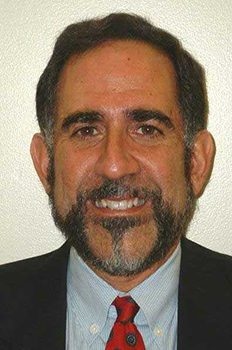Friday’s blowout U.S. jobs report (for July) doesn’t jibe with many of President Biden’s claims about employment during his administration.

By Alan Tonelson
No one can reasonably blame President Biden for running a victory lap right after last Friday’s official U.S. jobs figures (for July) came out. The 528,000 jobs added by employers more than doubled the consensus forecast, and undercut claims that his policies had created both historically torrid inflation and an atual or impending recession. And what U.S. President has ever resisted taking credit for whatever good economic news takes place during his term in office?
But in many key respects, Mr. Biden’s boasting went far overboard. For example, according to the President, “[W]e’re almost to 10 million jobs — almost to 10 million jobs since I took office. And that’s the fastest job growth in history.”
Except that it’s not. Since he entered office, the overall economy (defined by the Labor Department as the non-farm economy), has indeed seen net employment growth of 9.519 million. But between April, 2020 (the early pandemic era bottom) through January, 2021, total payrolls grew by 12.504 million.
It’s true that the early post-pandemic bounceback was unusually fast, benefiting from a reopening-strengthened rubber band effect from an unusually deep downturn. But it’s also true that the 12-plus million pre-Biden employment boost came over nine months. The Biden-era jobs have been created over 18 months.
Another tall Biden tale: “Since I took office, we’ve created 642,000 American manufacturing jobs in America. We’ve seen the biggest and the fastest job recovery in American manufacturing history since the ‘50s.”
The 642,000 number is correct. But during that pre-Biden phase of the recovery, employment in industry grew by 761,000. And the rubber band effect was somewhat weaker, since manufacturing lost a smaller share of its workforce during the depths of the pandemic than the rest of the economy.
Some job quality concerns are marring the Biden period record, too. Chiefly, fewer of those new jobs have been truly private sector jobs than during that prior recovery phase, and more have been jobs in government and in areas of the economy that I’ve called the subsidized private sector. These are categories like social services an especially the giant healthcare services sector that are heavily dependent on government funding for their economic performance – including their employment levels.
As I’ve repeatedly noted, many of these public sector and subsidized private sector jobs are vital for any modern economy. But their scale is influenced primarily by politicians’ decisions, not by market forces, and therefore they tell us relatively little about the economy’s real health.
Moreover, if you believe (as you should) that the private sector is more productive than the public sector, and that as a result its performance is the best guarantee of sustainable prosperity, then you want to see the private sector maintain a big lead in job creation over the government and subsidized private sector.
Unfortunately, that lead to date has eroded during the Biden presidency. Specifically, over the nine months of recovery before his inauguration, government (at all levels) plus subsidized private sector jobs accounted for 12.02 percent of the total expansion achieved in non-farm employment. But since then, these sectors have generated 16.92 percent of the total.
And government jobs accounted for all of this increase – and then some. During the pre-Biden recovery, they fell by 116,000. Under his administration, they’ve risen by 494,000.
President Biden is by no means responsible for the relative growth of government and especially subsidized private sector employment. As known by RealityChek regulars, that’s been a long-time trend, at least until the CCP Virus came along. Further, because of the country’s aging population, it could well be an unstoppable trend (unless the healthcare system in particular somehow becomes a lot more efficient). But as mentioned above, one price to date has been a less healthy economy. And how nice it would be if politicians spent more time talking about this tradeoff and how to at least ease it, and less time spinning jobs data so hard that they veer into misinformation.

ALAN TONELSON
Alan Tonelson, a columnist for IndustryToday, is founder of the RealityChek blog (alantonelson.wordpress.com), which covers manufacturing, trade, the economy, and national security. He has written for many leading publications on these subjects and is the author of The Race to the Bottom (Westview Press, 2000).
Copyright, RealityChek, 2022
In this episode, I sat down with Beejan Giga, Director | Partner and Caleb Emerson, Senior Results Manager at Carpedia International. We discussed the insights behind their recent Industry Today article, “Thinking Three Moves Ahead” and together we explored how manufacturers can plan more strategically, align with their suppliers, and build the operational discipline needed to support intentional, sustainable growth. It was a conversation packed with practical perspectives on navigating a fast-changing industry landscape.